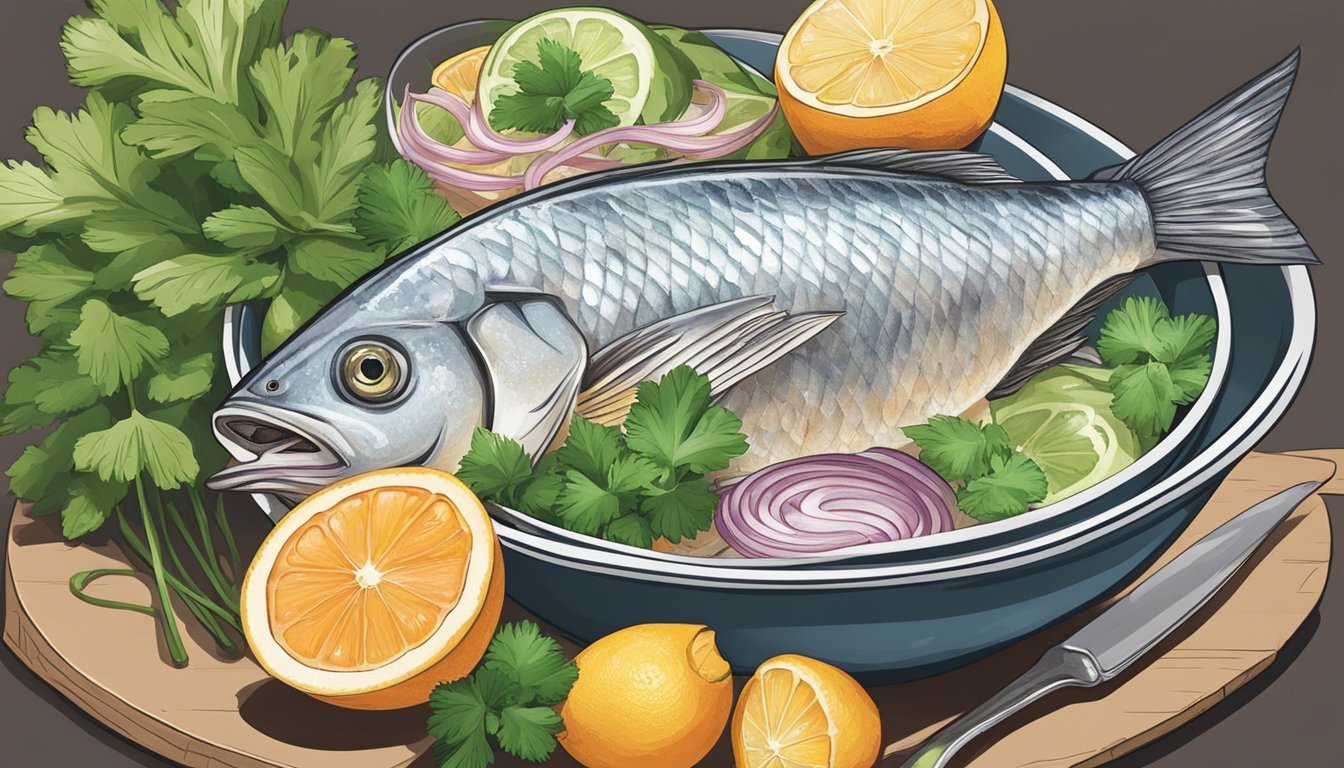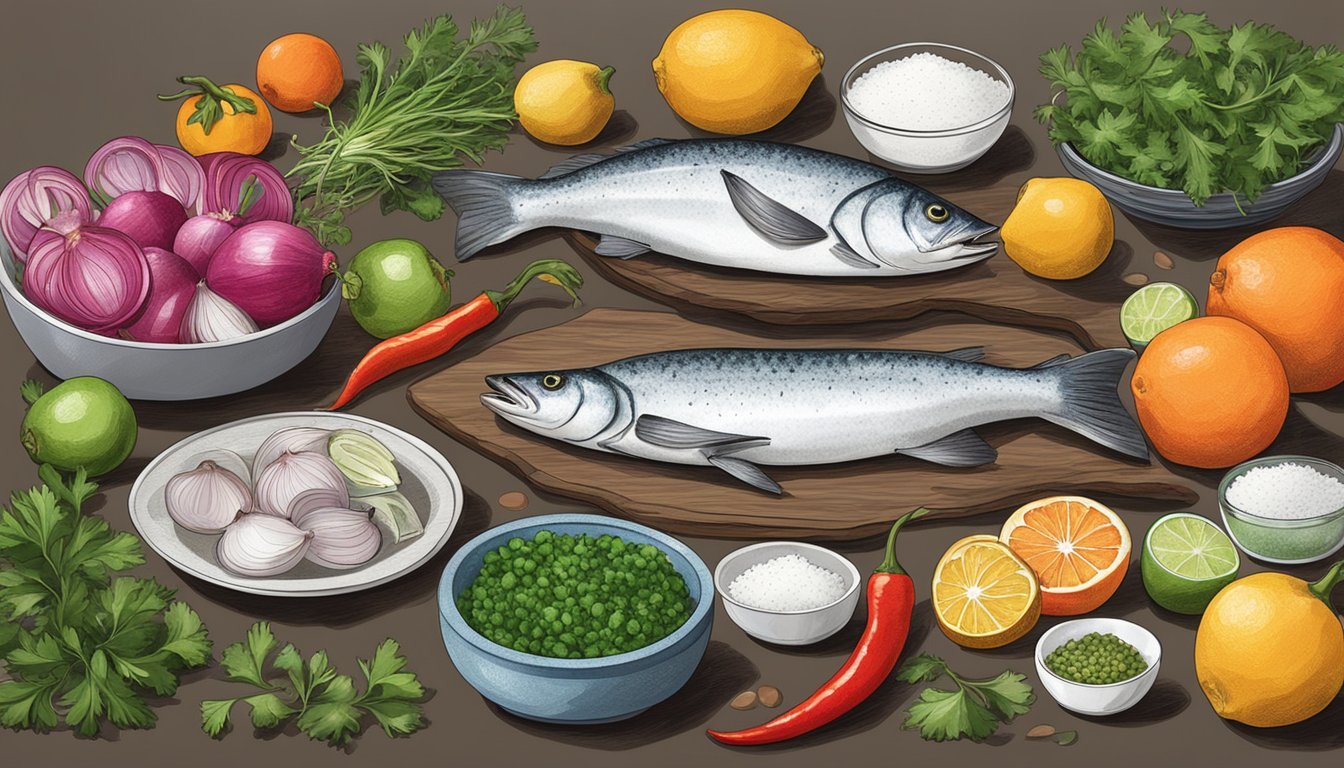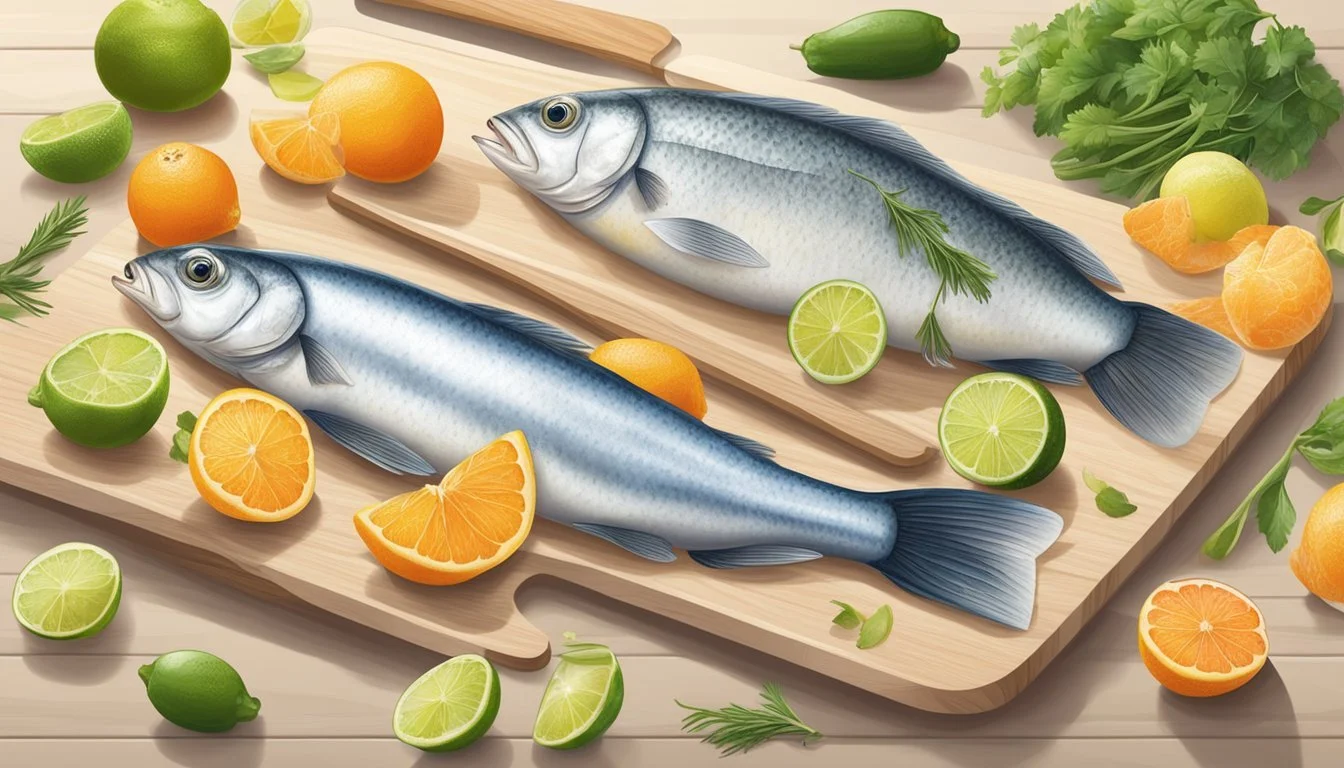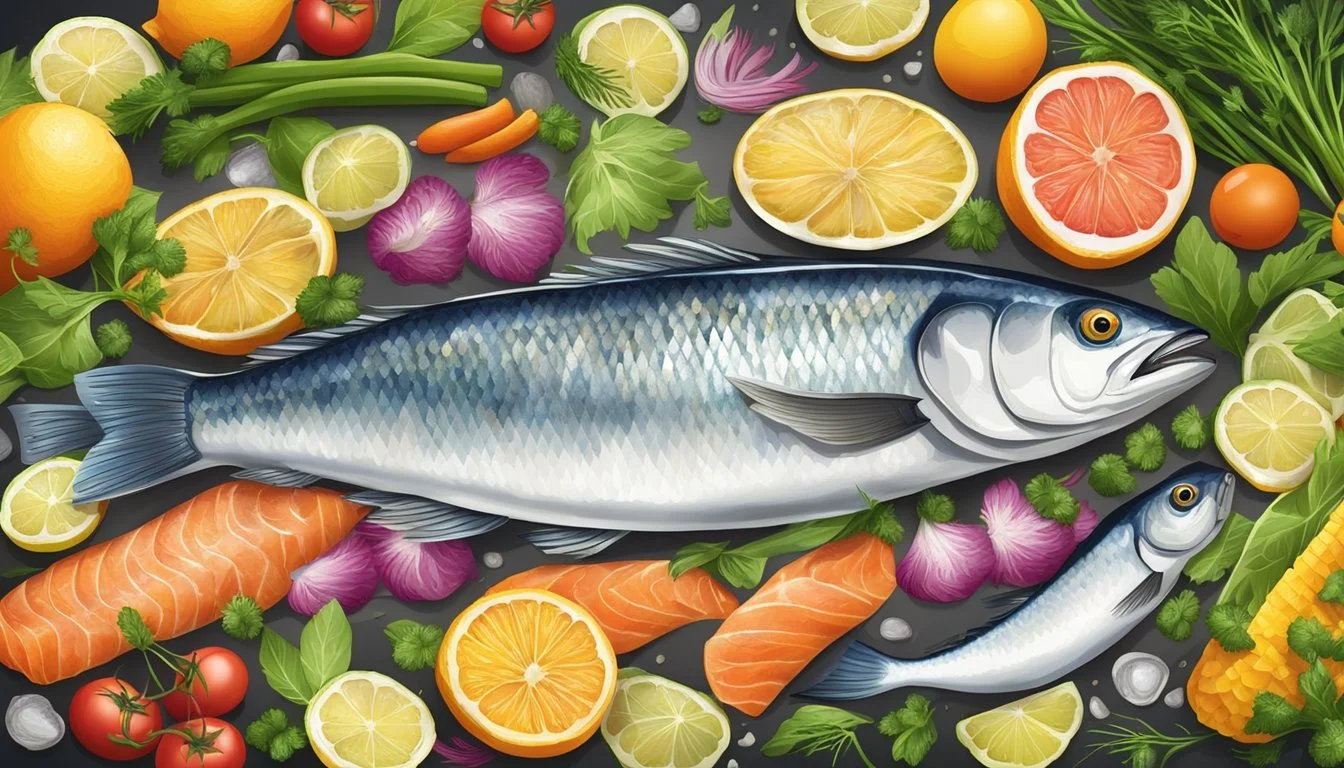Fresh vs. Frozen Fish: Crafting the Perfect Ceviche
Ceviche, a beloved Latin American dish, has gained popularity worldwide for its refreshing flavors and simple preparation. The key ingredient in this tangy seafood delicacy is fresh fish, but many home cooks wonder if frozen fish can be used as a suitable alternative.
Both fresh and frozen fish can be used to make delicious ceviche, as long as the frozen fish is of high quality and properly thawed. Flash-frozen fish, often available in areas far from the coast, can be an excellent option for ceviche. The freezing process helps preserve the fish's texture and flavor, making it a viable choice when fresh seafood is not readily available.
When using frozen fish for ceviche, it's crucial to thaw it properly in the refrigerator or cold water. Once thawed, the fish should be treated like fresh fish, marinated in citrus juices to "cook" the proteins. The acidity of the lime, lemon, and orange juices will break down the fish's proteins, resulting in a tender and flavorful dish that rivals ceviche made with fresh-caught fish.
Understanding Ceviche
Ceviche is a popular seafood dish originating in Peru that has spread throughout Latin America. It typically consists of raw fish or seafood marinated in citrus juices, which "cook" the protein through a process called denaturation.
Origins and Popularity
Ceviche traces its roots to ancient Incan civilization in Peru, where fish was preserved using fruit juices. The dish evolved over time, incorporating citrus brought by Spanish colonizers. Today, ceviche is considered Peru's national dish and has gained international acclaim.
Its popularity has spread across Latin America, with countries like Mexico, Ecuador, and Chile developing their own variations. The dish's refreshing flavors and perceived health benefits have contributed to its global appeal.
Ceviche's rise to fame has led to its inclusion on menus in high-end restaurants and casual eateries alike, cementing its status as a culinary icon.
Ceviche Variations
While traditional Peruvian ceviche uses white fish, numerous variations exist across Latin America. In Mexico, shrimp ceviche is common, often mixed with tomatoes and avocados. Ecuador's version may include popcorn or plantain chips as accompaniments.
Some popular ceviche ingredients include:
Fish: Sea bass, halibut, snapper
Seafood: Shrimp, octopus, scallops
Aromatics: Red onion, cilantro, chili peppers
Citrus: Lime, lemon, orange
Ceviche can be served as an appetizer or main course, often accompanied by sweet potato, corn, or lettuce leaves. Creative chefs continue to experiment with new flavors and presentations, keeping the dish exciting and relevant.
Nutritional Profile
Ceviche offers several nutritional benefits, making it a popular choice for health-conscious diners. Its main ingredients contribute to a well-balanced nutritional profile:
Nutrient Source Benefits Protein Fish/seafood Muscle building, satiety Omega-3 fatty acids Fish Heart health, brain function Vitamin C Citrus juice Immune support, collagen production Minerals Fish, seafood Various bodily functions
The dish is generally low in calories and carbohydrates, making it suitable for many diets. However, the high acidity may not be ideal for those with sensitive stomachs. It's important to note that while the citrus juice denatures the protein, it doesn't kill all bacteria, so using fresh, high-quality seafood is crucial.
Selecting Ingredients for Ceviche
Choosing high-quality ingredients is crucial for creating delicious ceviche. The fish selection, freshness, and accompanying components all play vital roles in the final dish.
Choosing the Right Fish
Firm, white-fleshed fish are ideal for ceviche. Sea bass, halibut, snapper, and cod work exceptionally well. These fish hold their texture when marinated in citrus juice. Tuna is another popular choice for its robust flavor and firm texture.
Red snapper is prized for its delicate flavor and tender flesh. When selecting fish, look for clear eyes, bright red gills, and a fresh ocean scent. Avoid fish with a strong fishy odor or discolored flesh.
Cut the fish into small, uniform pieces about 1/2 to 1 inch in size. This ensures even "cooking" in the citrus marinade and creates bite-sized morsels.
Fresh vs Frozen Fish
While fresh fish is often preferred, high-quality frozen fish can produce excellent ceviche. Flash-frozen fish preserves texture and flavor well. Thaw frozen fish in the refrigerator overnight before use.
Fresh fish should be used within 1-2 days of purchase. Keep it stored on ice in the coldest part of the refrigerator. Frozen fish can be kept for several months in the freezer.
When using frozen fish, ensure it's fully thawed and pat dry before cutting. This removes excess moisture that could dilute the marinade.
Essential Accompaniments
Lime juice is the traditional acid for ceviche, though lemon or a mix of citrus juices can be used. Fresh-squeezed juice provides the best flavor. Plan for about 1/2 cup of juice per pound of fish.
Aromatics and vegetables add flavor and texture:
Diced red onion
Chopped cilantro
Minced garlic
Diced tomatoes
Sliced jalapeño or serrano peppers
Diced avocado adds creaminess, while cucumber provides a refreshing crunch. Salt is essential to enhance flavors. Some recipes include a splash of olive oil for richness.
Serve ceviche with tortilla chips, tostadas, or saltine crackers for scooping.
Preparation Techniques
Properly preparing fish for ceviche involves crucial steps to ensure food safety and achieve optimal texture and flavor. Key techniques include careful handling, precise cutting, and proper marination.
Handling and Safety
Always use fresh or properly thawed frozen fish for ceviche. Rinse the fish under cold water and pat dry with paper towels. Keep the fish refrigerated at 40°F or below until ready to prepare. For freshwater fish, freeze at -4°F for at least 7 days to kill potential parasites.
When using frozen fish, thaw it gradually in the refrigerator overnight. Avoid thawing at room temperature, which can promote bacterial growth. Once thawed, use the fish within 24 hours.
Wash hands thoroughly before and after handling raw fish. Use separate cutting boards and utensils for fish to prevent cross-contamination.
Marinating
The citric acid in the marinade "cooks" the fish through denaturation of proteins. Use fresh-squeezed lime or lemon juice for the best flavor and acidity. Aim for a pH below 4.6 to effectively denature the proteins.
Combine the citrus juice with salt and any additional seasonings in a non-reactive bowl. Glass, ceramic, or stainless steel work well. Add the fish pieces and ensure they are fully submerged in the marinade.
Marinate the fish in the refrigerator for 15-25 minutes for firmer fish like halibut, or up to 2 hours for softer fish. The flesh will turn opaque and become semi-firm when ready.
Cutting and Presentation
Use a sharp knife to cut the fish into uniform pieces, typically 1/2 to 3/4 inch cubes. This size allows for even marination and a pleasant texture when eaten.
Remove any dark meat, skin, or bones before cutting. For best results, slice against the grain of the fish to enhance tenderness.
After marinating, drain excess liquid if desired. Gently fold in diced onions, cilantro, chili peppers, or other fresh ingredients. Serve immediately on chilled plates or in glasses for an elegant presentation.
Garnish with avocado slices, corn kernels, or sweet potato for added texture and flavor. Accompany with crisp tortilla chips or plantain chips for scooping.
Recipes and Flavor Pairings
Ceviche offers a vibrant palette of flavors, combining fresh fish with zesty citrus and aromatic herbs. The key lies in balancing acidity with complementary ingredients to enhance the seafood's natural taste.
Classic Ceviche Recipe
Start with fresh white fish like sea bass or halibut, cut into 1/2-inch cubes. Mix with lime juice, red onion, jalapeño, and kosher salt. Let marinate for 15-20 minutes, stirring gently halfway through.
Add diced tomatoes and minced garlic. Season with black pepper to taste. Gently toss all ingredients to combine.
For a traditional Peruvian twist, include sweet potato cubes and corn kernels. Garnish with cilantro and a drizzle of olive oil before serving.
Contemporary Twists
Experiment with different citrus combinations. Try orange and lemon juice for a sweeter profile, or add grapefruit for a bitter note.
Incorporate tropical fruits like mango or pineapple for a refreshing contrast. Avocado adds creaminess and balances acidity.
For a Mexican-inspired version, mix in diced cucumber and chopped mint. This adds crunch and a cool flavor that complements the fish.
Consider using salmon or tuna for a richer taste. These oily fish pair well with soy sauce and sesame oil for an Asian-fusion ceviche.
Garnishes and Sides
Serve ceviche with crispy tostadas or tortilla chips for scooping. Plantain chips offer a sweeter alternative.
Sprinkle toasted sesame seeds or pumpkin seeds for added texture. A dash of hot sauce or a sprinkle of chili powder can enhance heat levels.
For a complete meal, pair ceviche with a side of quinoa salad or rice. A light green salad with a citrus vinaigrette complements the dish well.
Consider serving in lettuce cups for a low-carb option. Garnish with microgreens or edible flowers for an elegant presentation.
Food Safety and Storage
Proper handling and storage of fish for ceviche is crucial to ensure food safety and maintain quality. Refrigeration, freezing, and understanding shelf life are key factors in preventing foodborne illness and preserving freshness.
Refrigeration Practices
Store fresh fish for ceviche in the coldest part of the refrigerator, typically around 40°F (4°C). Place the fish in a sealed container or wrap it tightly in plastic wrap to prevent cross-contamination. Use fresh fish within 1-2 days of purchase for optimal quality and safety.
For prepared ceviche, refrigerate immediately and consume within 2 days. Keep ceviche chilled on ice if serving for extended periods. Never leave ceviche at room temperature for more than 2 hours to prevent bacterial growth.
Freezing Techniques
Freezing fish can effectively kill parasites and extend shelf life. Use a deep freezer set to 0°F (-18°C) or below. Wrap fish tightly in moisture-proof packaging or vacuum-seal to prevent freezer burn.
For optimal safety, freeze fish at -4°F (-20°C) or below for at least 7 days before using in ceviche. This practice is especially important for wild-caught seafood from Alaska or other cold waters, which may contain parasites.
Shelf Life Considerations
Fresh fish for ceviche should be used within 1-2 days of purchase if refrigerated. Frozen fish can be stored for up to 3-6 months without significant quality loss. Thaw frozen fish in the refrigerator, never at room temperature.
Prepared ceviche has a short shelf life due to the raw fish. Consume within 2 days if properly refrigerated. Discard ceviche if it develops an off-odor, slimy texture, or unusual color. Always prioritize food safety over extending shelf life when dealing with raw seafood dishes.
Serving and Enjoyment
Ceviche shines as a versatile dish that can be enjoyed in various settings and paired with complementary foods. Its refreshing flavors and light texture make it ideal for warm weather and seafood-centric meals.
Ceviche as an Appetizer or Starter
Ceviche excels as an appetizer or starter, setting the tone for a seafood-focused meal. Serve small portions in chilled martini glasses or on crisp lettuce leaves for an elegant presentation. A typical serving size ranges from 4-6 ounces per person.
For casual gatherings, offer ceviche in a large bowl with tortilla chips on the side. This allows guests to scoop and enjoy at their own pace. Ceviche's bright flavors and acidity stimulate the appetite, making it an excellent choice to kick off summer barbecues or dinner parties.
Pairing with Other Dishes
Ceviche pairs well with a variety of side dishes and beverages. Serve it alongside:
Steamed white rice or quinoa
Crispy plantain chips
Avocado slices or guacamole
Grilled corn on the cob
For drinks, opt for light, crisp options that complement the citrus notes:
Chilled white wine (Sauvignon Blanc or Pinot Grigio)
Mexican beer with a lime wedge
Citrus-based cocktails like margaritas or mojitos
These pairings enhance the ceviche experience without overpowering its delicate flavors.
Recommendations for Use
Ceviche's versatility extends beyond appetizers. Incorporate it into other dishes for unique twists on classic recipes:
Use as a topping for tostadas or tacos
Mix with cooked rice for a refreshing seafood salad
Serve over mixed greens for a light lunch
For gluten-free diets, ceviche is an excellent option when served with corn tortilla chips or lettuce wraps. Its high protein content and low calorie count make it suitable for health-conscious diners.
Store leftover ceviche in the refrigerator and consume within 24 hours for optimal freshness and flavor. The acidity in the marinade continues to "cook" the fish, potentially altering its texture over time.








